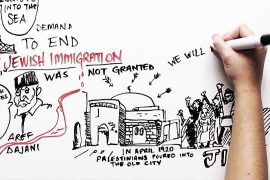1) At the Middle East Institute, Jonathan M Weiner examines ‘Essential questions about the Russia-Hamas link’.
“As the war in Gaza continues to unfold, essential questions about Russian and Iranian support for Hamas remain. They include whether Russia played any role in providing support to Hamas ahead of its Oct. 7 attack on Israel. Evidence available from foreign-language publications in Russian, Persian, Arabic, and Hebrew, as well as those in English, provides provocative leads, which, if accurate, have serious potential implications.”
2) The George Washington University’s Program on Extremism presents a paper by Lorenzo Vidino and Sergio Altuna on ‘Tackling Hamas funding in the West’.
“Charitable organizations are one of the most common vehicles used by Hamas networks in the West to collect funds for the group. Western-based charities headed by Hamas members and/or supporters raise funds in communities and, at times, obtain aid and development grants from Western NGOs and governments. Funds are then siphoned to Hamas in various ways. In many cases, the passage is indirect, as the formal recipient of the Western-based charity simply acts as a middleman and re-directs all or part of the funds to Hamas. In other cases, the recipient is an educational or humanitarian organization that belongs more or less directly to the Hamas orbit.”
3) At WINEP, Devorah Margolin and Matthew Levitt analyse ‘The Road to October 7: Hamas’ Long Game, Clarified’.
“When Hamas took over the Gaza Strip by force of arms in 2007, it faced an ideological crisis. It could focus on governing Gaza and addressing the needs of the Palestinian people, or it could use the Strip as a springboard from which to attack Israel. Even then, Hamas understood these two goals were mutually exclusive. And while some anticipated Hamas would moderate, or at least be co-opted by the demands of governing, this did not happen. Instead, the group invested in efforts to radicalize society and build the militant infrastructure necessary to someday launch the kind of attack that in its view could contribute to the destruction of Israel. This article explores the road from Hamas’ 2007 takeover of Gaza to the October 2023 massacre.”
4) The ITIC looks at reports of ‘Attempts to organize an aid flotilla to the Gaza Strip’.
“Meanwhile, several other initiatives for sending aid boats to the Gaza Strip have been reported since the beginning of the war. All of them are based in Turkey and Zaher Birawi is involved in all of them. Birawi is a Hamas and Muslim Brotherhood activist from Britain who is the chairman of the International Committee to Break the Siege on Gaza, which is a founding member of the Freedom Fleet coalition and who was one of the leaders of the Mavi Marmara flotilla.”
5) The Fathom Journal carries an interview with Behnam Ben Taleblu about the role of Iran in supporting its proxies, Hamas and Hezbollah, to wage war on Israel.
“Iran’s recent strategy has been to take the material, political, and financial support to the next level, to run a ‘death by a thousand cuts’ policy. That’s why you’ve seen the boom and bust cycle of violence coming out of Gaza since Israel evacuated it in 2005 and Hamas took over in 2007. Iran has found a jurisdiction for those rejectionist terror groups – arming them, training them, equipping them – but also, starting in 2014, helping them indigenise select long-range strike capabilities, particularly rockets. Iran, from so far away, is able to maintain its support of these local actors. When Iran says ‘death to Israel’, it means precisely what we saw on 7 October.”
6) CAMERA UK recently participated in a webinar with the UKLFI Charitable Trust titled ‘The BBC: What is it doing and what can we do about it?’.



